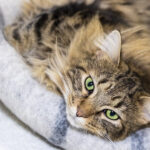Thinking about bringing a bigger feline friend into your life? You might be surprised to learn that some domestic cat breeds can tip the scales at 20 pounds or even more, significantly larger than the average house cat. These impressive cats aren’t just bigger in size; they often have larger-than-life personalities to match! While owning a large cat breed is a wonderfully rewarding experience, it’s important to understand their specific needs, from extra-large scratching posts to carefully managed diets. Ensuring they maintain a healthy weight is crucial for their long-term well-being.
Here, we explore 10 magnificent Large Domestic Cat Breeds, each with unique traits that make them truly special companions.
Key Considerations for Large Cat Breeds
- Size Matters: While average cats weigh between 8–12 pounds, large breeds can reach 20 pounds or more at a healthy weight.
- Bigger is Better (Supplies-wise): Large cat breeds require appropriately sized equipment, including spacious litter boxes, sturdy cat trees, and robust scratching posts to accommodate their size and strength.
- Weight Management is Key: Just like any cat, maintaining a healthy weight is vital for large breeds. Obesity can lead to various health problems, so careful feeding and exercise are essential.
1. Maine Coon: The Gentle Giant
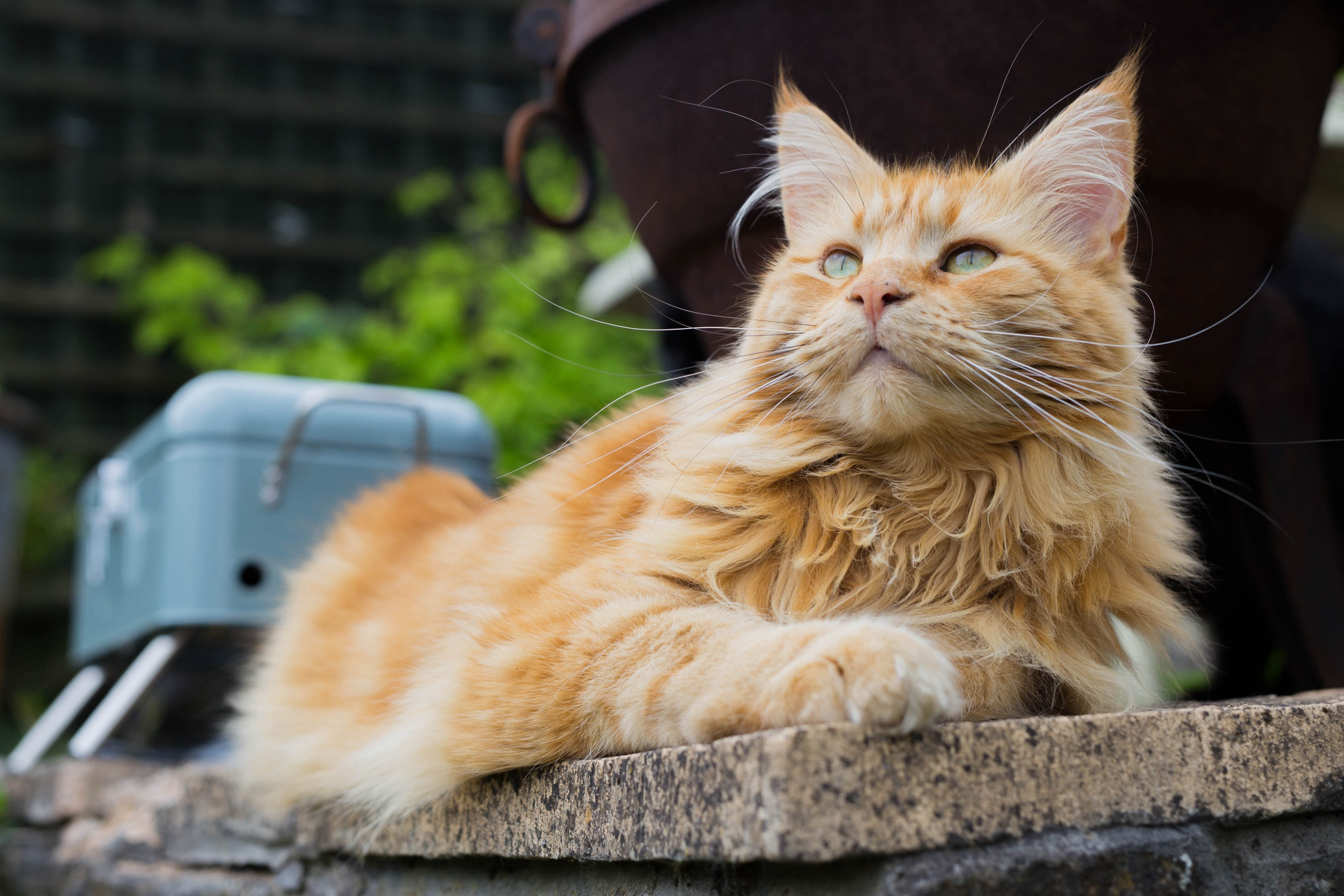 A majestic orange Maine Coon cat lounging peacefully.
A majestic orange Maine Coon cat lounging peacefully.
Weight: 8–18 pounds
The Maine Coon is arguably the most popular large domestic cat breed, and for good reason. These “gentle giants” are renowned for their friendly and laid-back personalities, making them ideal family pets. Maine Coons are known for being sociable, affectionate, and great with children and other animals.
Their substantial size necessitates larger amenities around the house. Invest in spacious litter boxes to ensure their comfort and hygiene, and heavy-duty scratching posts that can withstand their size and playful nature. It’s also worth noting that Maine Coons are predisposed to hip dysplasia. Regular veterinary check-ups are crucial for monitoring their joint health, and your vet may recommend joint supplements to support their mobility and comfort as they age.
2. Norwegian Forest Cat: The Fluffy Climber
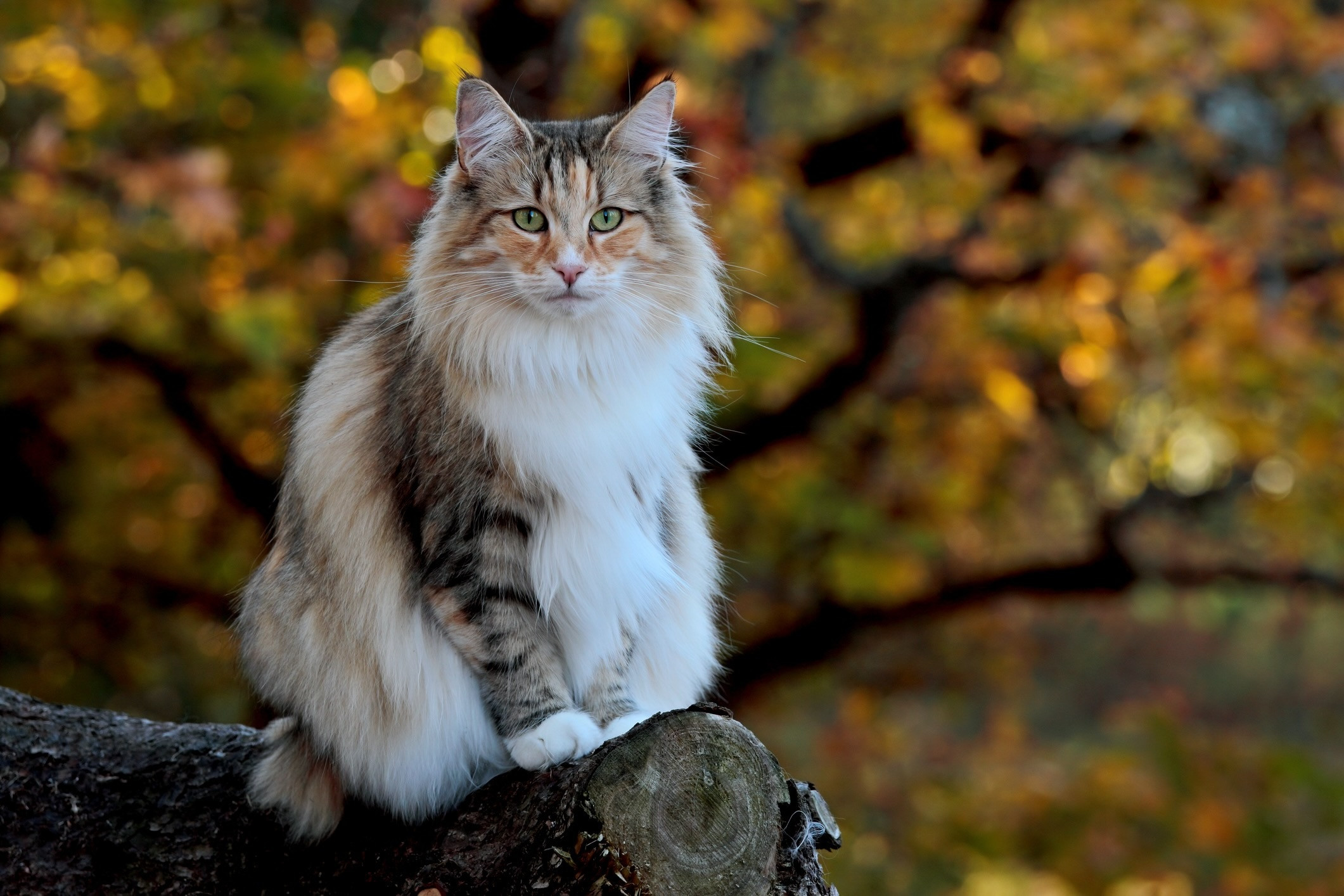 A beautiful calico Norwegian Forest Cat perched on a log in a forest setting.
A beautiful calico Norwegian Forest Cat perched on a log in a forest setting.
Weight: 12–16 pounds
Don’t be deceived by their luxurious, thick fur – the Norwegian Forest Cat, affectionately nicknamed “Wegie,” is a genuinely large and powerfully built feline. Originating from the Scandinavian forests, they are natural climbers with a love for heights. To cater to their arboreal instincts, provide them with tall, sturdy cat trees and perches that can support their weight and allow them to explore their vertical world safely.
While generally robust, their size makes them prone to joint issues like hip dysplasia and arthritis. Maintaining a healthy weight through a balanced diet and regular activity is particularly important for this fluffy breed to minimize stress on their joints and ensure a long and active life.
3. Siberian: The Russian National Treasure
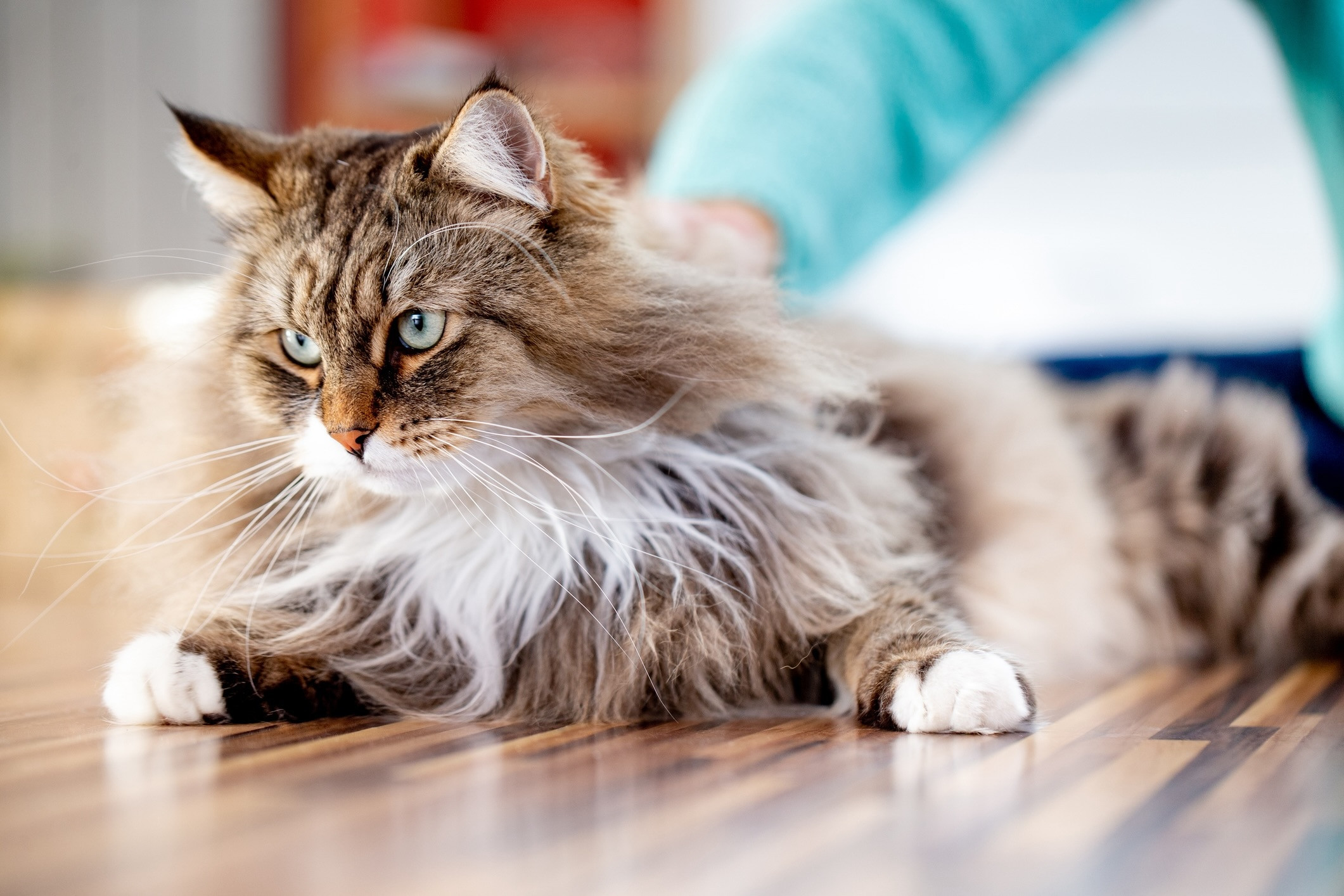 A cuddly Siberian cat being gently petted by a person on the floor.
A cuddly Siberian cat being gently petted by a person on the floor.
Weight: 12–15 pounds
The Siberian, the national cat of Russia, is a breed that captivates with its striking eyes and a dense, luxurious triple coat, perfectly adapted to withstand harsh winters. This large breed is known for its slow maturation, often taking up to five years to reach its full size and weight.
Despite their playful nature, Siberians can be prone to becoming couch potatoes, increasing their risk of obesity. To combat this, encourage daily playtime and interactive sessions. Siberians are intelligent and can even be leash-trained, offering a fun way to explore the outdoors and stay active. Monitoring their weight and adjusting their food intake as needed is essential for their well-being.
4. Bengal: The Leopard Look-Alike
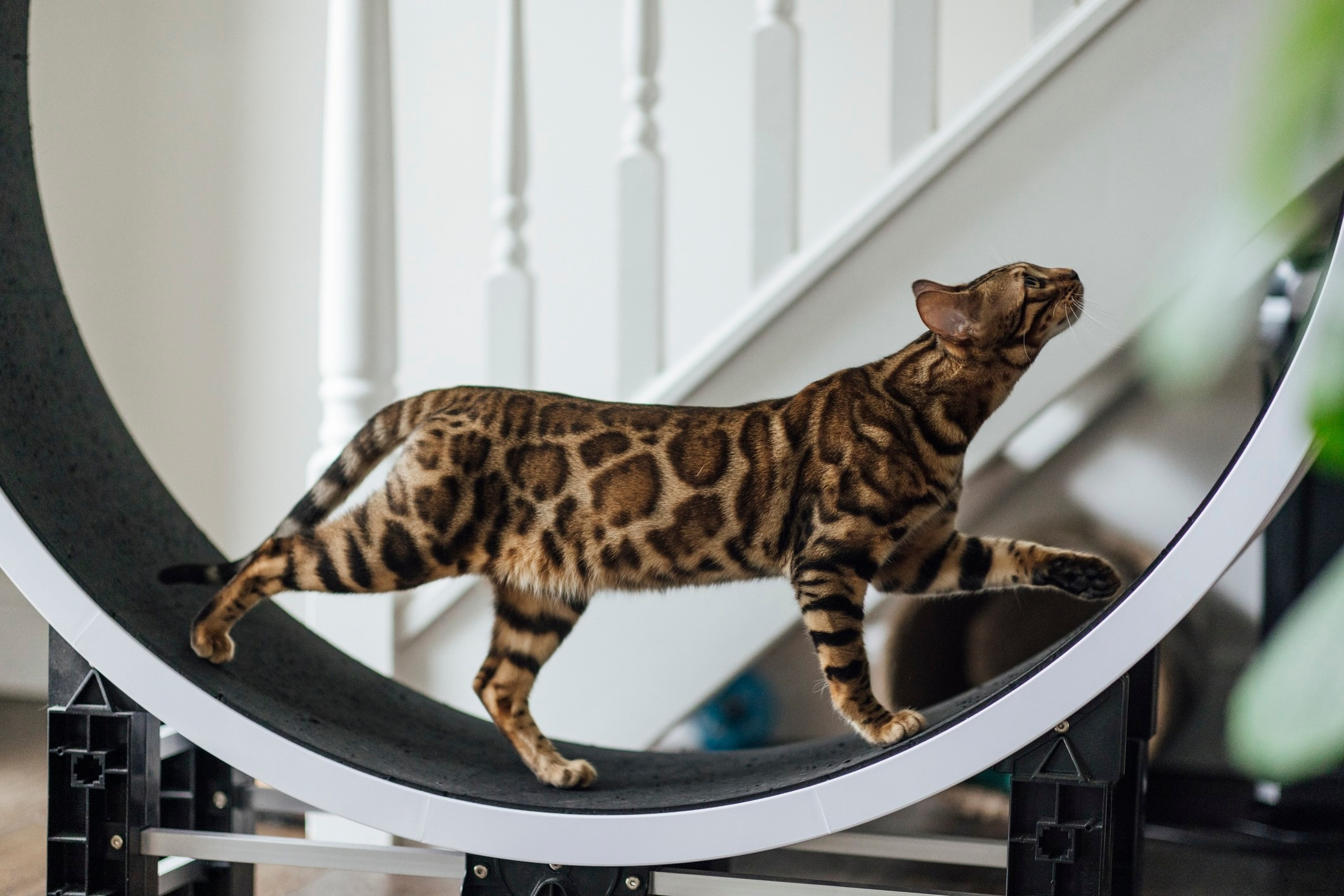 A sleek Bengal cat confidently walking on a cat exercise wheel.
A sleek Bengal cat confidently walking on a cat exercise wheel.
Weight: 8–15 pounds
The Bengal cat is a captivating breed that brings the wild beauty of a leopard into your home. Known for their striking spotted or marbled coats and athletic build, Bengals are incredibly active and energetic cats. While they enjoy relaxing naps just like any feline, they possess a high energy level and require ample vertical space to satisfy their jumping and climbing desires.
Bengals have a natural hunting drive and thrive on mental stimulation. Puzzle feeders and treat-dispensing toys are excellent tools to engage their predatory instincts, keep them entertained, and prevent boredom. Providing a stimulating environment is key to keeping a Bengal happy and healthy.
5. Savannah: The Tall and Energetic Hybrid
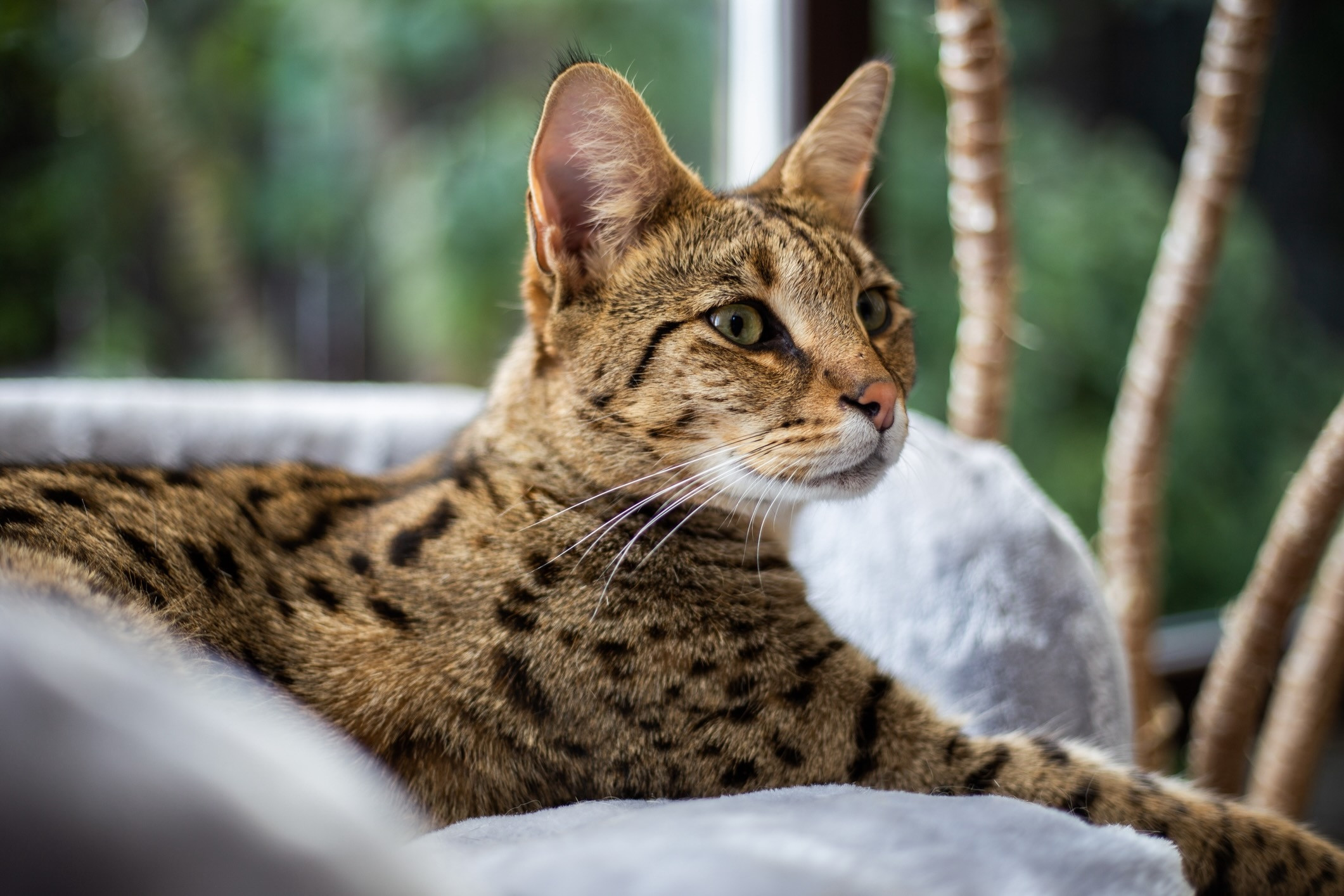 A slender Savannah cat gracefully lounging on a modern chair.
A slender Savannah cat gracefully lounging on a modern chair.
Weight: 12–25 pounds
The Savannah cat is an exotic and strikingly tall breed, resulting from a cross between a domestic cat and an African Serval. With their wild appearance and impressive size, Savannahs can feel right at home on the Serengeti or your living room. They are known for their sweet temperaments, intelligence, and boundless energy. One of their most remarkable traits is their incredible jumping ability – they can leap up to 8 feet!
To accommodate their athleticism, Savannahs need exceptionally durable cat trees and securely mounted shelves to allow for safe climbing and exploration. Their high energy levels also mean they require plenty of interactive playtime and enrichment to stay happy and prevent destructive behaviors.
6. Ragdoll: The Gentle and Docile Giant
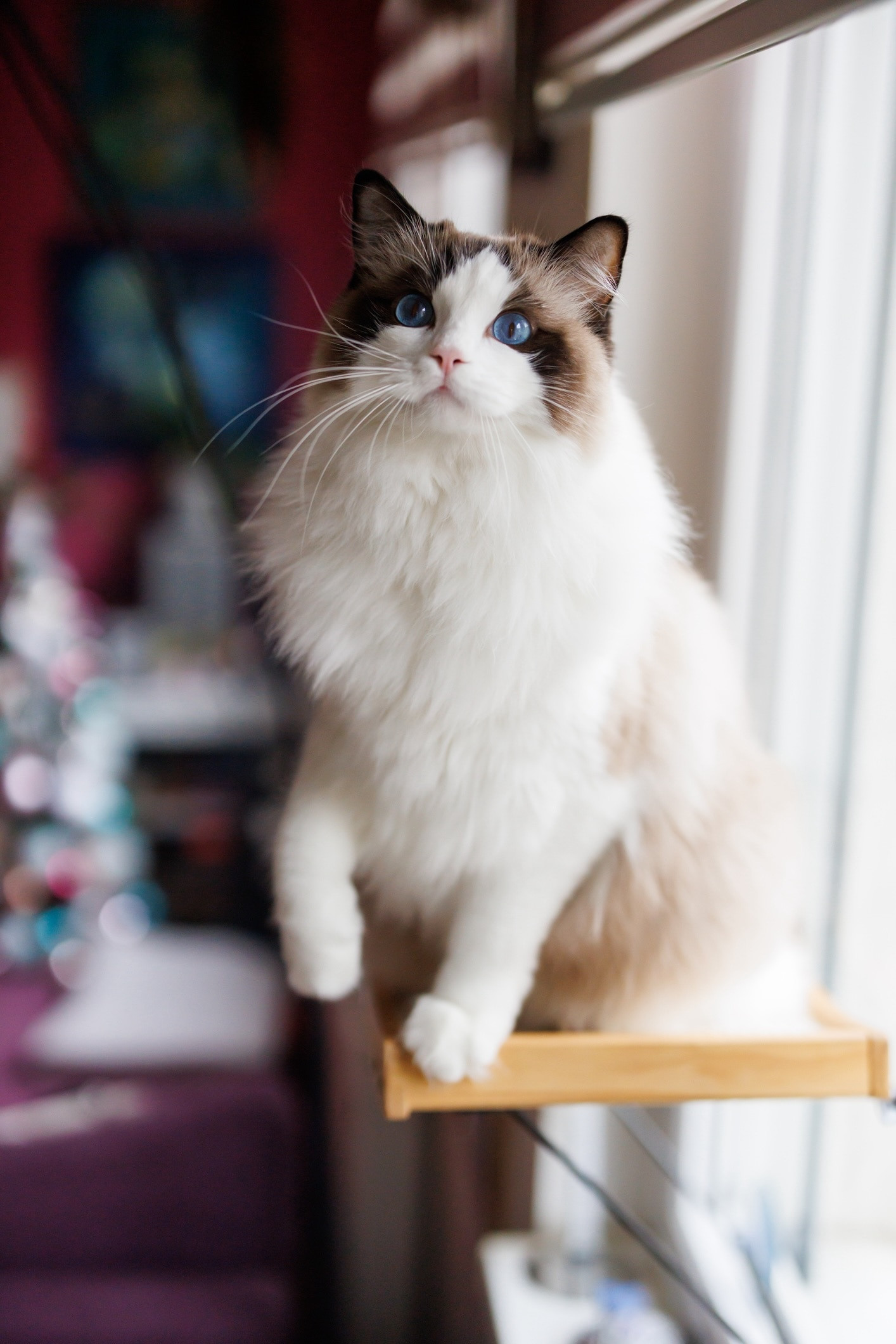 A fluffy Ragdoll cat perched atop a tall cat tower, looking down serenely.
A fluffy Ragdoll cat perched atop a tall cat tower, looking down serenely.
Weight: 10–20 pounds
Ragdolls are aptly named for their tendency to go limp and relaxed when held, much like a rag doll. These large and loving cats are renowned for their exceptionally sweet and docile personalities, making them wonderful companions. While they are slow to mature, typically reaching their full size and weight around 4 years of age, their laid-back nature can predispose them to weight gain if not carefully managed.
Portion control and regular, engaging playtime are crucial to prevent obesity and associated health issues like arthritis in Ragdolls. Despite their relaxed demeanor, they can be enticed to exercise with fun games of fetch and clicker training, providing both physical and mental stimulation.
7. RagaMuffin: The Sweet and Sturdy Companion
 A relaxed RagaMuffin cat lounging on a patio under protective netting.
A relaxed RagaMuffin cat lounging on a patio under protective netting.
Weight: 10–20 pounds
Closely related to the Ragdoll, the RagaMuffin shares many of the same endearing qualities, including a gentle temperament and large size. Like Ragdolls, RagaMuffins are slow to mature, reaching their full size around 4 years old. However, RagaMuffins are naturally big-boned and sturdy, meaning you’ll need to invest in larger and more robust cat supplies to suit their frame.
Think jumbo-sized cat trees, extra-large litter boxes, and spacious carriers for transport. As they age, RagaMuffins can be susceptible to arthritis, making joint health a key consideration. Providing proper nutrition and ensuring regular, moderate exercise from a young age can help support their joint health throughout their lives.
8. American Bobtail: The Playful Bobtailed Breed
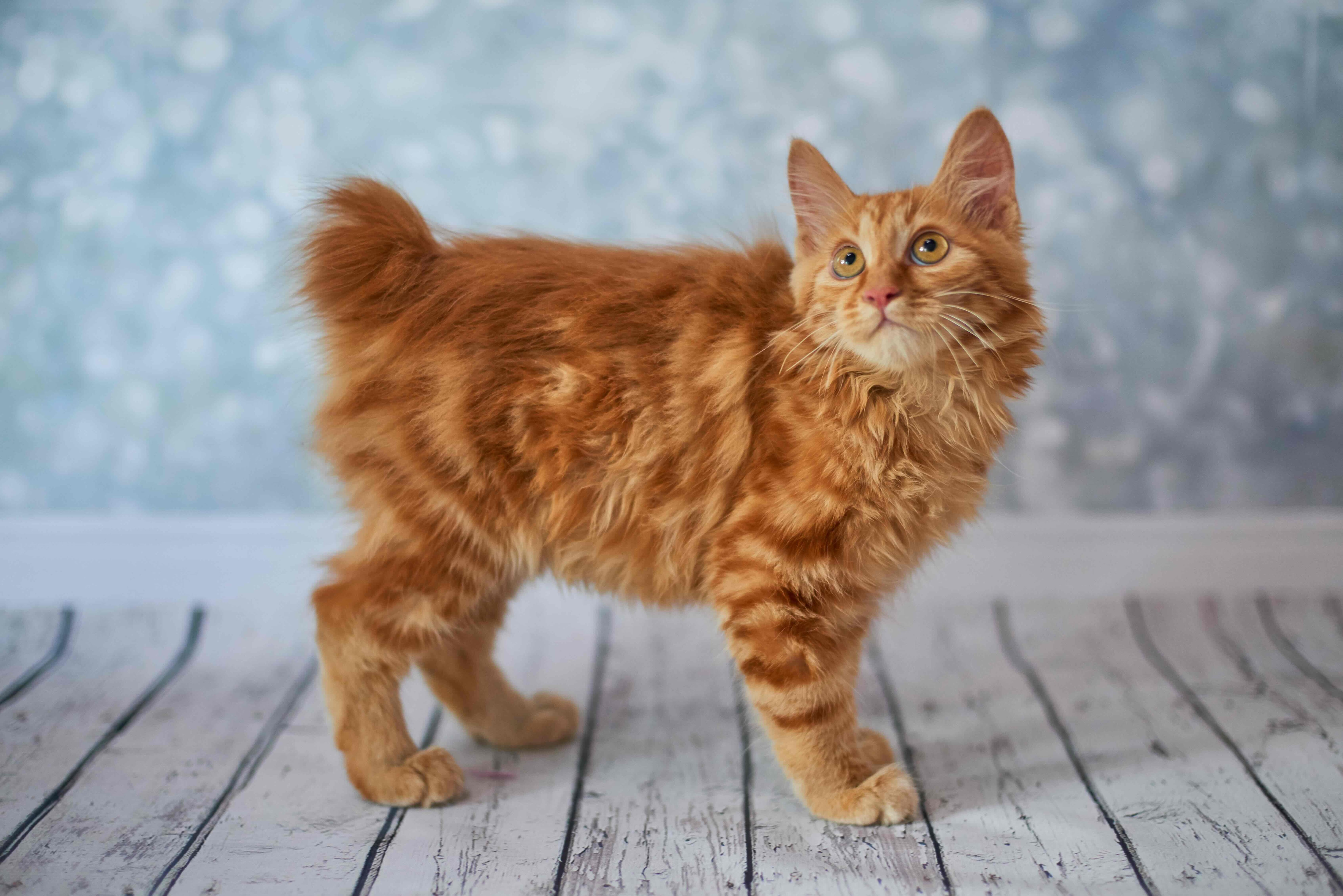 An adorable orange American Bobtail kitten looking upwards with curiosity.
An adorable orange American Bobtail kitten looking upwards with curiosity.
Weight: 7–16 pounds
Instantly recognizable by their short, “bobbed” tail, the American Bobtail is a medium to large-sized breed known for its affectionate and playful nature. These intelligent cats are highly trainable and excel at puzzle feeders, providing mental enrichment and slowing down their eating. They can even learn to walk on a leash, offering another avenue for exercise and exploration.
The genetic mutation responsible for their bobbed tail can also make them prone to spinal and hip issues. Feeding an AAFCO-compliant diet, formulated for their life stage, is crucial to help American Bobtails maintain a healthy weight and support their overall skeletal health.
9. British Shorthair: The Calm and Easygoing Cat
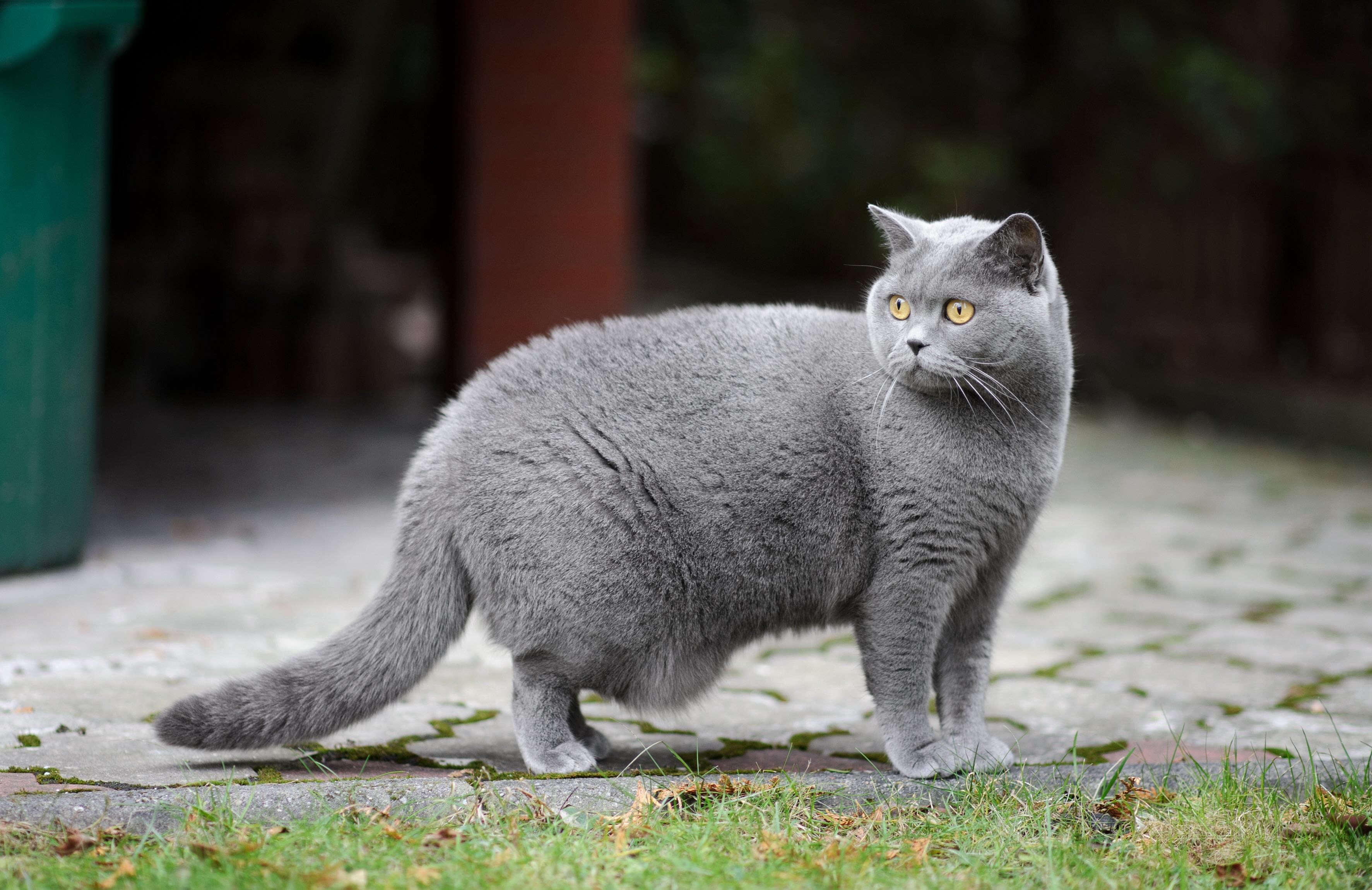 A dignified blue British Shorthair cat standing outdoors in a garden.
A dignified blue British Shorthair cat standing outdoors in a garden.
Weight: 7–17 pounds
The British Shorthair is famed for its calm, easygoing, and adaptable temperament. These round-faced felines are relatively low-maintenance and make excellent companions. However, their preference for lounging over leaping means they can be less active and prone to weight gain if not encouraged to move.
Engage them with interactive toys like feather wands and catnip to encourage activity and prevent them from becoming too sedentary. Careful portion control and minimizing treats are also essential to manage their weight and reduce the strain on their joints as they age.
10. Turkish Van: The Water-Loving Swimmer
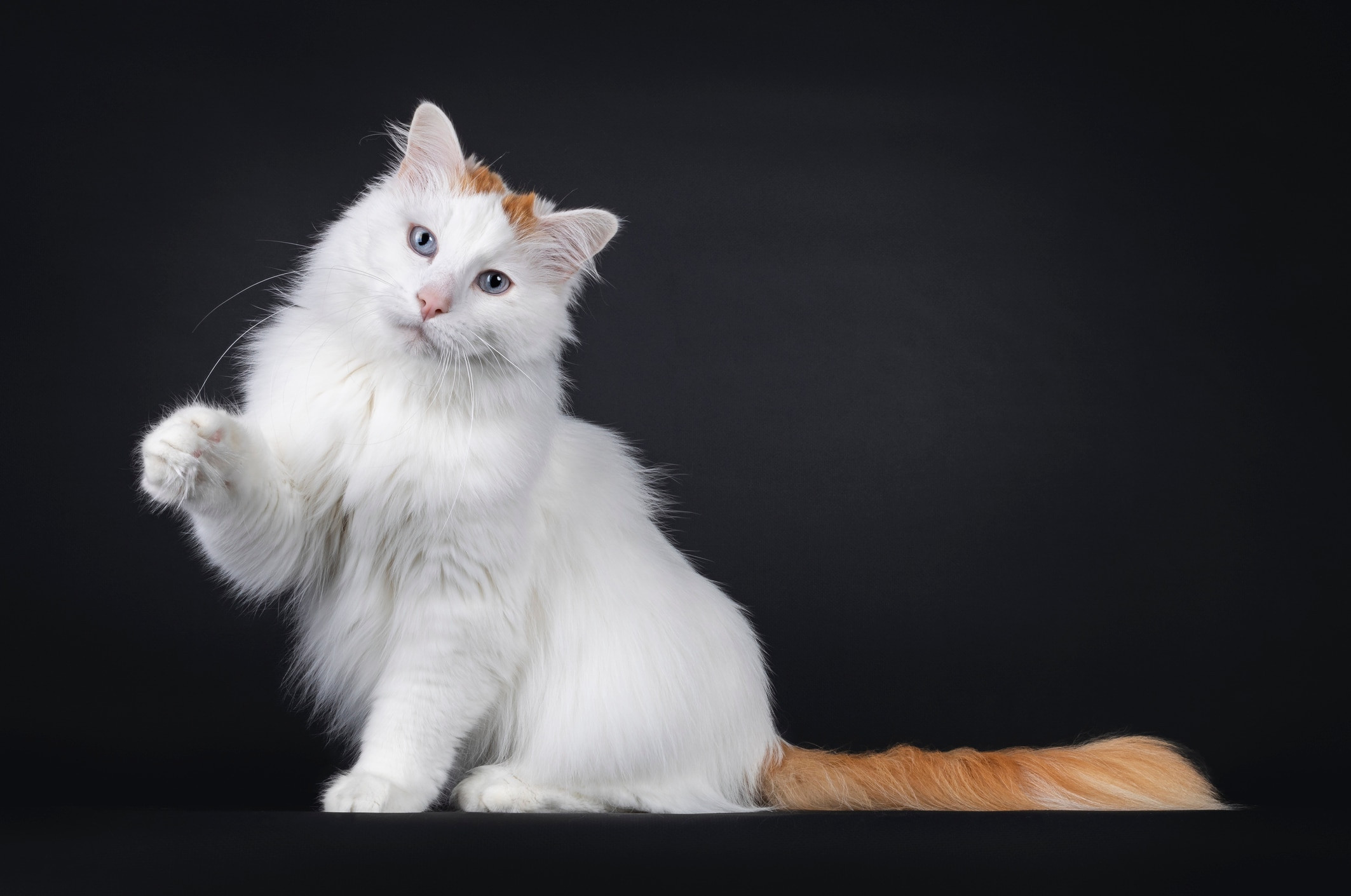 A striking Turkish Van cat sitting and playfully pawing against a dark background.
A striking Turkish Van cat sitting and playfully pawing against a dark background.
Weight: 10–20 pounds
The Turkish Van is one of the larger domestic cat breeds and is distinguished by its striking color patterns and an unusual affinity for water. Unlike most cats, Turkish Vans often enjoy playing in water, whether it’s splashing in pet water fountains or even investigating bathtubs. These active and intelligent cats require plenty of enrichment to keep them stimulated.
Provide tall cat trees, shelves, and scratching posts to channel their energy and satisfy their climbing instincts. Regular exercise is also crucial to prevent weight gain and maintain healthy joints in this robust and playful breed.
Written by:

